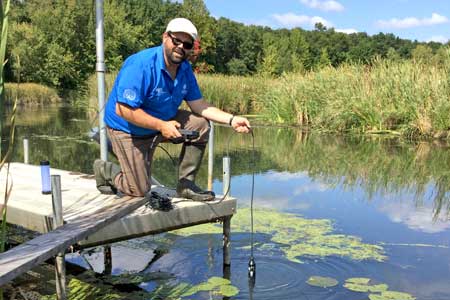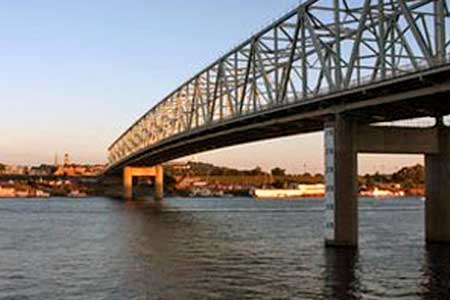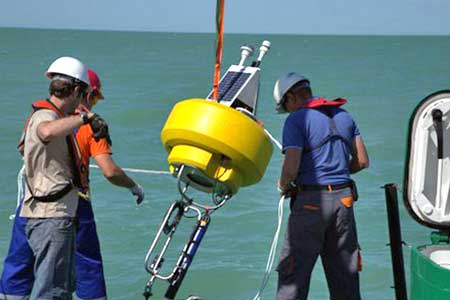Detecting Oil in Water

Oil and water is rarely a good mixture, at least when it comes to the natural environment. Avoidance of oil-related environmental catastrophes depends first and foremost on good practices and an abundance of caution. However, automated oil detection systems are a valuable tool to provide early warning in the event of an oil release so that actions can quickly be taken to mitigate the scope and environmental impact.
Oil in the Environment

Oil Detection System
Whether it be extraction sites, oil tanker transportation routes, near-shore refining facilities or any other location where large quantities of petroleum and petroleum products are handled, real-time oil detection systems are a useful tool to monitor the environment and provide early warning.
Since most oil is lighter than water and floats to the surface, a non-contact surface-facing sensor is often the ideal instrument for detecting a spill. This can be achieved using LDI’s ROW (Remote Optical Watcher), a cutting-edge sensor with optical fluorescence technology for detecting oil films as thin as 1 μm. The ROW can detect almost any type of oil or petroleum product, including heavy (crude, bunker fuels etc.), medium (diesel, lubricant etc.) and light fraction (kerosene, jet fuel etc.) oils.
Aluminum and stainless steel versions are available for use in almost any environment. These can be mounted on the topside of NexSens CB-Series data buoys such as the CB-950 buoy, which provides ample size and buoyancy for stable mounting of the ROW. The 46W solar panels and internal battery bank support the power requirements of the ROW, but in a relatively small footprint for ease of deployment and cost-effectiveness. It supports accessories such as the M650H solar marine light for night-time visibility.
In any CB-Series buoy, a buoy-mounted NexSens X3 environmental data logger or interfaces with the ROW and transmits real-time data via 4G LTE cellular or Iridium satellite telemetry. The logger features multiple sensor ports with waterproof connectors which facilitate system expansion with other sensor types such as weather stations, multi-parameter water quality sondes, and wave and current sensors.
For emulsions or dissolved oil, in-water fluorometric sensors like those from Turner Designs can also detect and quantify the relatively toxic aromatic hydrocarbons in crude oils or VOCs (volatile organic compounds) found in petroleum derivatives. This is contrary to the ROW which provides only presence/absence readings on the water surface. Sensors can be delivered in single-parameter instruments or multi-sensor sondes.
Data transfer to the WQData LIVE web datacenter provides options for viewing, manipulation, reporting and exporting of data, configuration of alarm notifications, data API, and more.
Contact a NexSens Applications Engineer today to discuss your oil detection application.

Case Studies
Using Technology to Protect Tradition
The Nottawaseppi Huron Band of Potawatomi (NHBP) is facing the future with a firm grasp on tradition and a mastery of new technology to handle rapid growth and changes. Recognized as a tribe by the US federal government in 1995, the NHBP employs thousands in western and central Michigan. Since its inception, its priorities have been restoring its over 1,000 acres of land and fostering environmental stewardship for the good of the tribe’s future and preservation of its past.
Read MoreOrganics Detection System
Seventy tons of toxic carbon tetrachloride made its way down the Kanawha and Ohio Rivers in February of 1977. The spill raised tremendous concern over how well the bevy of recently instated environmental laws were actually being enforced. This event led to the Ohio River Valley Water Sanitation Commission’s (ORSANCO) creation of a multi-state Organics Detection System (ODS) in 1978.
Read MoreNorthern Caspian Sea Dredging
Kazakhstan is a country not often associated with having a shoreline, let alone a marine environment. However, in the western corner of Kazakhstan lies a section of coastline along the Caspian Sea. Through a network of rivers and channels, the Caspian Sea is actually connected to the trade routes of the world’s oceans. To support the expanding oil fields of Western Kazakhstan, a deep-water port is being constructed in the Northern Caspian Sea.
Read More






